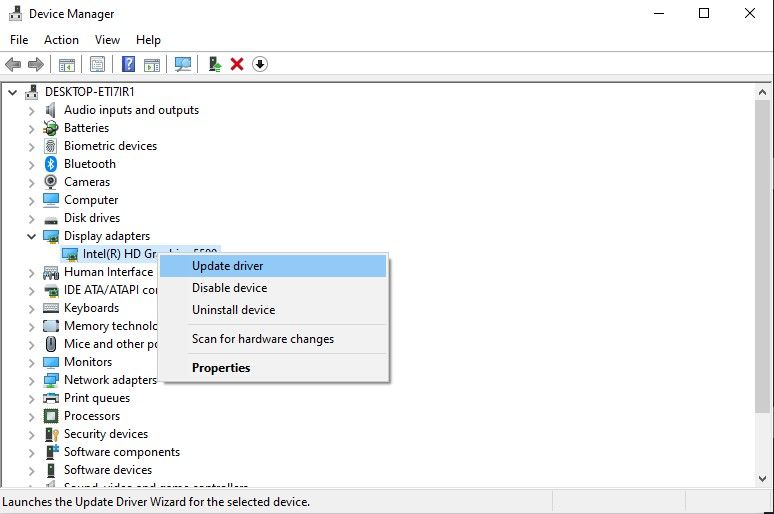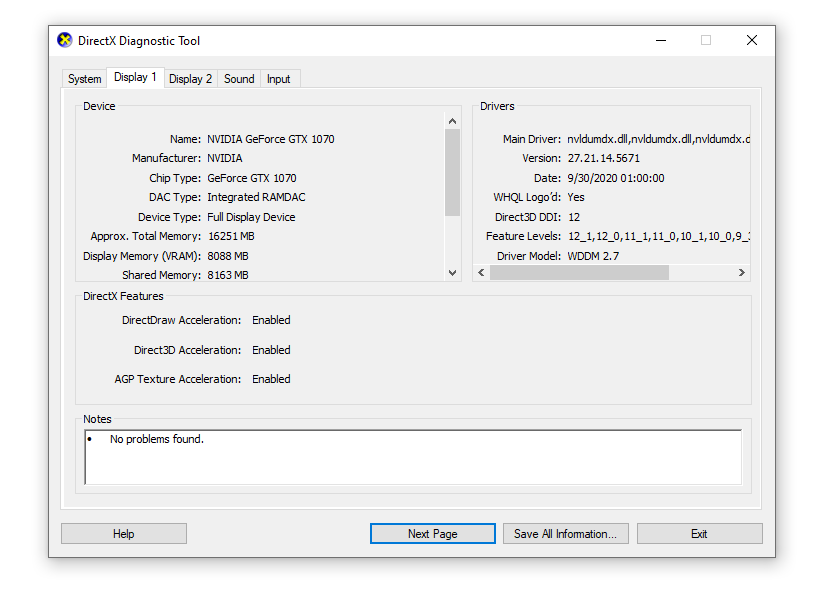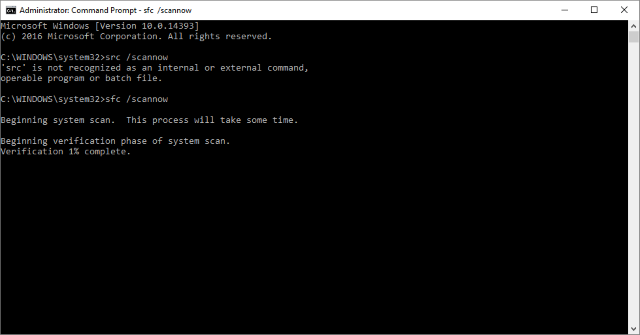Have you experienced the Windows “Memory Management” blue screen of death? This common Windows stop code is frustrating, but there are several simple fixes for the Windows Memory Management error.
What Is Windows Memory Management?
Every Windows machine uses memory management to manage system memory. I know the clue is in the name, but properly working memory management is important to your system’s health. When the Windows memory management function stops working, your computer will start throwing out BSODs like no tomorrow.
Windows 10 and 11 memory management tracks every memory location on your system, managing the allocation, transition, and processes available to and held in your system RAM. So, when you open a program, memory management allocates RAM to it, and when you close it, it tells your system that the memory is now free for use.
So, why does the Windows 11 memory management BSOD happen?
In short, you’ll see the memory management BSOD screen, which means there has been a critical memory management error. Windows 11 will crash, and you may see the 0x0000001A memory management stop code (it doesn’t always appear, but the words “MEMORY_MANAGEMENT” will definitely be on your screen somewhere).
There are several well-known causes of memory management errors, including:
- Faulty RAM
- Issues with new hardware, such as a graphics card
- Faulty drivers
- Software issues, including corrupt system and operating system files
- Disk errors
Sometimes, if it’s a one-off memory management error, a quick system restart will clear the problem, and you’ll be good to go. Sometimes, you might have to dig deeper to fix the memory management error.
1. Basic Fixes
Before getting into the detailed fixes, try running through these quick fixes. One might solve your memory management issue before you spend more time resolving it.
- Have you tried switching your computer off and on again? This simple fix can fix all manner of Windows issues, including the Windows memory management stop code.
- Next, try updating Windows. Outdated system files can cause unexpected errors. Checking for a pending update is a quick and easy way to determine whether that is causing your issue.
-
- Windows 10: Press Win + I, then head to Update & Security > Windows Update. Install any pending updates.
- Windows 11: Press Win + I, then head to Windows Update. Install any pending updates.
-
- You could also try to reseat your system hardware in case something has slipped slightly out of its port or socket. If you moved your computer recently or something or someone bumped into it, there’s a small chance your RAM became unseated, which could lead to a memory management error.
There is no guarantee these basic fixes will work, but they’re worth trying.
2. Run the Windows Memory Diagnostic Tool
If your Windows memory management error persists, it’s time to run the Windows Memory Diagnostic to check for a specific error with your system’s RAM. The tool runs after you reboot Windows 11, checks for errors in your RAM, and creates an error log for analysis.
- Input windows memory diagnostic in the Start Menu search bar, and select the Best Match.
- You now have two options: restart now or check for problems after the next system reboot. As it sounds, the restart option will immediately reboot your computer and begin the diagnostic tool. Be warned, however, that the diagnostic tool can take hours to run, and your computer will be out of action during that period.
- As such, checking for problems later is often the best option, as you can continue to use your computer (memory management BSODs notwithstanding) and then plan the memory scan to run overnight, maximizing its run time.
Once complete, you can check the Windows Memory Diagnostic event log for errors. The log file, however, isn’t apparent after you boot back into Windows.
- Press Win+X and select Event Viewer from the Power menu.
- In the Event Viewer, select Event Viewer (Local) > Windows Logs > System.
- In the right-hand column, select Find and type MemoryDiagnostic into the box. Hit Find Next.
Your diagnostic results will be displayed at the bottom of the window.
3. Run MemTest86
Now, while the Windows Memory Diagnostic tool scans and checks your RAM for errors, it doesn’t always catch everything. Many people swear by a different tool when it comes to RAM checking: MemTest86.
The main difference between the two tools is that you run MemTest86 from a bootable USB flash drive. Like the Windows Memory Diagnostic, MemTest86 takes a long time to complete a single pass, taking hours depending on the amount of RAM installed in your system.
Want to give it a try? Check out “Step 7: Check Your RAM Using MemTest86” in our guide to fixing the WHEA Uncorrectable Error. It has all the instructions you need!
4. Update Your Drivers
Another quick and handy potential fix for the memory management BSOD is to update your system drivers. New software or hardware may come with new drivers, and your system might not have got the message. Driver faults are less common than in the days of computing yore, especially as Windows 10 and 11 handle driver updates, by and large. But that’s not to say they don’t happen.
Windows 10
- Press Win + I to open the Settings panel, then select Update & Security > View update history. You can find any driver updates here.
- Now, type device manager in the Start menu search bar and select the Best match. Go down the list and check for an error symbol. If there is nothing, your driver status is likely not the source of the issue.
- If you do see a driver with a yellow or red alert, right-click the problematic driver, select Update Driver, then follow the on-screen instructions, typically selecting the option to Search automatically for drivers.
Windows 11
- Press Win + I to open the Windows 11 Settings panel. Head to Windows Update > Update History.
- Scroll down and unfurl the Driver Updates section. It’ll show you any recently updated Windows 11 drivers.
- Now, press Win+X to open the Power Menu, and select Device Manager. Scroll down the list and check for the yellow or red error symbol. If there are no error symbols, it’s unlikely that a misconfigured driver is causing the Windows 11 memory management issue.
- If you do see a driver with a yellow or red alert, right-click the problematic driver, select Update Driver, then follow the on-screen instructions, typically selecting the option to Search automatically for drivers.
That said, you can use a third-party tool to update all of your system drivers simultaneously. Check out this list of free tools you can use to fix Windows problems. The first two options—IOBit’s Driver Booster and Snappy Driver Installer—do exactly this.
5. Update Your GPU Drivers
A common theme throughout Memory Management BSOD threads and forum posts is that, at times, outdated or brand-new GPU drivers can cause the BSOD. Although the focus is on the memory management stop code, there is a video memory management-specific stop code too. The video memory management internal stop code is 0x0000010E and may indicate a faulty GPU driver.
To update your GPU drivers, go to the manufacturer’s website and download the latest update. For the majority of users, that’s either Nvidia or AMD.
If you’re unsure what GPU you are using, type dxdiag in your Start Menu search bar and select the Best Match. When the DirectX Diagnostic Tool opens, select the Display tab. You’ll find your GPU listed here.
Nvidia GPU owners also have the option of installing the Nvidia GeForce Experience—but is it worthwhile?
6. Run CHKDSK and SFC
CHKDSK is a Windows system tool that verifies the file system and, with certain settings, fixes issues as it runs. You run CHKDSK from the Command Prompt, and it has a bunch of nifty features.
- Type command prompt in your Start menu search bar, then right-click the best match and select Run as administrator. (Alternatively, press Windows key + X, then select Command Prompt (Admin) from the menu.)
- Next, type chkdsk /r and press Enter. The command will scan your system for errors and fix any issues along the way.
Running CHKDSK can help with several Windows errors, including the DPC WATCHDOG VIOLATION stop code.
Memory management error still occurring? System File Check is another Windows system tool that checks for missing and corrupt Windows system files. Sounds like CHKDSK, right? Well, SFC checks for Windows system files specifically, while CHKDSK scans your entire drive for errors.
But before running the SFC command, it is best to double-check that it is completely functional.
DISM stands for Deployment Image Servicing and Management. DISM is an integrated Windows utility with a vast range of functions. In this case, the DISM Restorehealth command ensures that our next fix will work properly. First, work through the following steps.
- Type Command Prompt (Admin)in the Start menu search bar, then right-click and select Run as administrator to open an elevated Command Prompt.
- Type the following command and press Enter: DISM /online /cleanup-image /restorehealth
- Wait for the command to complete. The process can take up to 20 minutes, depending on your system’s health. The process seems stuck at certain times, but wait for it to complete.
- When the process completes, type sfc /scannow and press Enter.
Now, wait for the scan to complete.
7. Reset Windows (Last Resort)
Okay, still tearing your hair out? Sometimes nothing other than a Windows Reset will completely fix your problem. Windows Reset replaces your system files with a completely fresh set of files. Theoretically, this clears lingering issues relating to the memory management error while keeping most of your important files intact.
Windows 10
- Head to Settings > Update and Security > Recovery.
- Under Reset this PC, select Get started.
- Your system restarts as soon as you hit the button, so make sure you back up any important files beforehand. Your system will restart, then you may select Keep my files or Remove everything.
Windows 11
- Press Win + I, and head to System > Recovery.
- From here, select Reset this PC. You can choose to keep or remove your personal files and then reinstall Windows 11.
Memory management BSODs are difficult to take care of. So many variables can lead to a memory management error, and that’s exactly why diagnosing a direct issue is sometimes problematic. However, one of the above fixes will bring your system back from the brink so that you can continue your work free of any BSOD for now.








